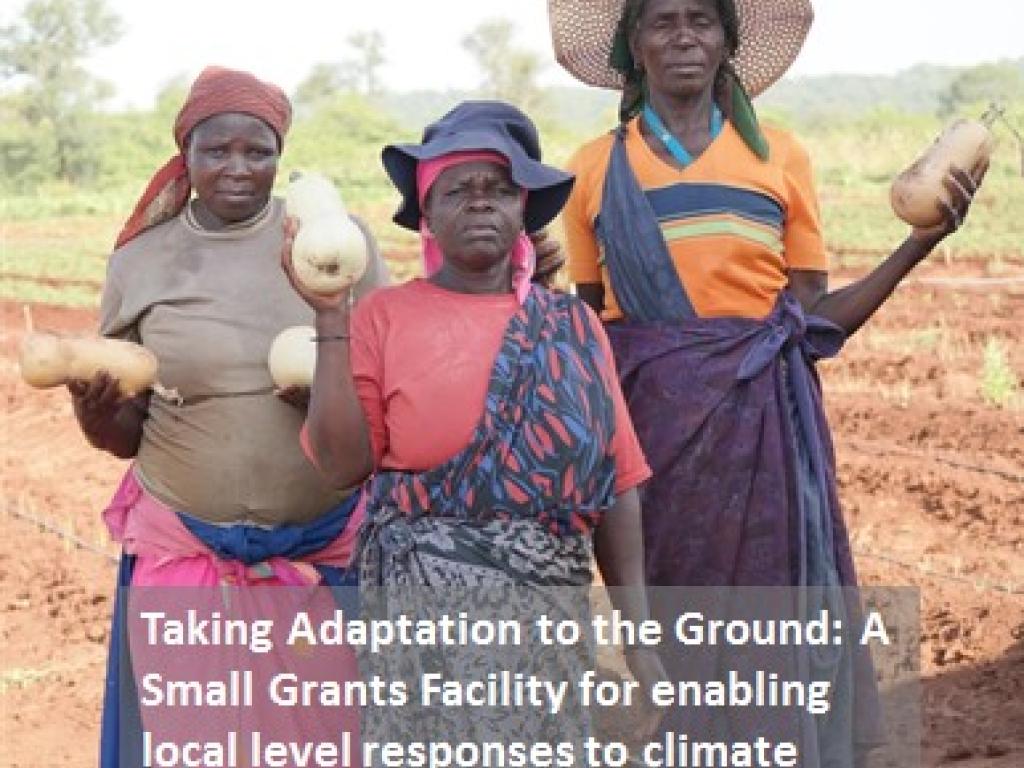Climate Finance and Civil Society: What is the link?

By Joan Momanyi, ACDI master's student class of 2016
“How does Climate Finance work? How does a country know they are ready to receive climate finance? How do we build capacity? Who develops the projects to be funded?” These are some of the questions raised at a seminar, hosted by the ACDI, where Dr. Mandy Barnett articulated the journey of South Africa’s National Implementing Agencies (NIE) to the Adaptation Fund (AF). .
The seminar was quite informative as she explained some of the challenges South Africa experiences in accessing climate finance, such as the country’s readiness to receive funds, the gap in capacity, challenges in developing partnerships, capacity of funds’ absorption and the compromise of good processes as a result of pressure to spend.
However, what was striking was the mention of the civil society. I believe climate finance is more of a top-down approach, “so what role does the civil society have to play in climate finance?” I asked myself. A question that must have occupied the minds of several other people.
This roused the need to figure out what is truly the role of the civil society in climate finance. Climate finance is perceived to lack societal involvement because it uses a “top-down” approach, as opposed to a “bottom–up” approach that incorporates the local community. This deprives the community the opportunity to be involved in project planning and implementation, without which the project may not thoroughly address the community’s needs. These results in the hostility of the indigenous population towards the project, resulting in the lack of the necessary drive and commitment to make the project a success both during its implementation and after it is handed over to them.
When dealing with community members, climate change experts need to be aware of the fact that their technical jargon only serves to alienate people. The community identifies with terms such as ‘change in weather patterns’ rather than ‘climate change’ and ‘change in planting strategies’ rather than ‘adaptation’. Most communities are probably coping with climate change through changes in practices but they would not identify with the term ‘adaptation’. Reducing the jargon used encourages the involvement of the communities. It also gives a chance for experts to ask and understand what the problems are and how they can integrate local community traditional knowledge into the plans for better efficiency.
Vulnerable communities should be the first to benefit from climate finance, which should fund activities that are prioritized by the local community. These communities tend to develop adaptation strategies to cope with the changing climate; however, the extent to which they can adapt is heavily limited by their lack of resources. In such circumstances, the local government is expected to step in and bridge the gap, by identifying the needs of the community and formulating how to solve their problems.
The involvement of civil society plays a major role in climate finance projects in the following ways;
- The local experts have vast traditional knowledge that improves the viability of the projects implemented
- The funds deal intricately with the immediate issues on the ground
- Ensure funds are effectively utilized
- Safeguard the good governance of funds
- Improves transparency and accountability of funds
- Improves credibility and access to climate finance
However, civil society is faced by the following challenges in accessing climate finance:
- Lack of knowledge that a climate fund exists
- The lack of knowledge on how to communicate the need for climate finance
- Poor coordination between the local and national Government
The national government should go a step further and involve local governments to identify problems and establish how to tackle them. This helps to channel funds from a national level to a municipal level. It also supports the country through the impact and outcomes of the adaptation strategies and implemented projects.
In my view, for climate finance to gain any kind of momentum that results in real change, it must be primarily community oriented. It seems to me that an approach that is not community-focused would be in vain as attempt to remedy this issue. There is ample room for growth through the alignment of community engagement with projects, and strategically targeting the vulnerable communities.
Disclaimer: The views expressed here are solely those of the author in her private capacity